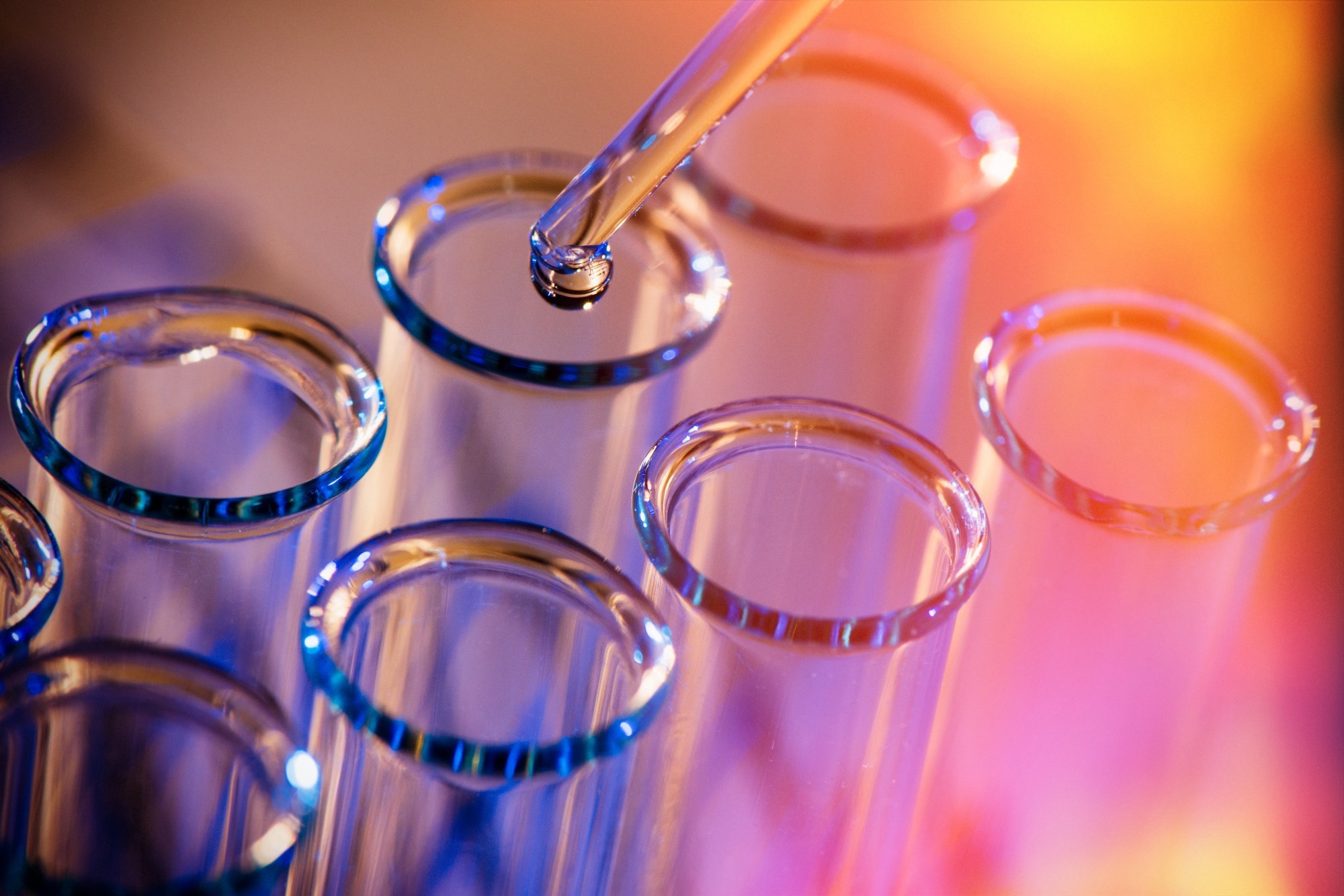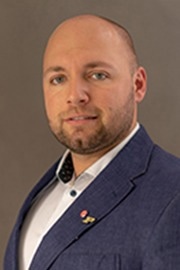In this interview, LECO Corporation speaks to Petr Vozka about the importance of good quality equipment in complex chemical composition analysis and the day-to-day life of his lab.
Can you provide an overview of recent developments at LECO, your new lab, including how it has been equipped and why this is important for the success of your research program?
Our initial lab setup included a single quadruple GC-MS/FID, acquired primarily for educational purposes to support our extensive mass spectrometry curriculum. However, the existing mass spectrometry equipment was inadequate for advanced teaching needs. To address this, I secured LECO's GC-MS/FID, commonly referred to as the QuadJet, as part of my startup agreement.
Our capabilities in qualitative analysis, particularly in high-resolution applications, were limited initially. This changed significantly when we were able to acquire the Pegasus BT thanks to a giveaway program, which marked the beginning of our engagement with FarEye. This led to a valuable collaboration with LECO, through which we acquired the Pegasus BT40 GCxGC-TOFMS, equipped with a pyrolyzer for high-temperature desorption analysis.
Having received this state-of-the-art instrument recently, we are in the process of familiarizing ourselves with its functionalities. Our laboratory is now well-equipped with most of the essential instrumentation for advanced research. The current focus is on utilizing these resources to produce impactful research and contribute positively to societal needs.
How does this contribute to your major research goals, and how will the equipment facilitate progress in these endeavors?
Several projects are currently underway, with the primary focus on analyzing products derived from plastic waste depolymerization, including techniques like pyrolysis and hydrothermal processing. This project involves collaboration with various universities, such as Purdue University, the University of Chemistry and Technology in Prague, and Delft University of Technology in the Netherlands, who supply samples for analysis.
This collaborative effort aims to optimize depolymerization processes amidst the growing problem of plastic waste. The resulting products are complex chemical mixtures that could potentially be useful as fuels or other chemicals.
A key component of this research is the use of comprehensive two-dimensional gas chromatography (GCxGC), which is essential for identifying compounds and understanding depolymerization pathways.
Initially, GCxGC-FID was employed for mostly hydrocarbon-based products, but the complexity of depolymerized materials necessitated a more advanced approach. A significant challenge has been the analysis of alkenes in depolymerized products, as these materials are primarily made up of alkenes, in contrast to traditional petroleum-based fuels.
This has highlighted a research gap in analytical chemistry, particularly in distinguishing between different types of alkenes and cycloalkanes. Efforts are being made to develop a method to address this challenge, with a publication expected soon. The research also extends to aromatic alkenes, building on methods effective for non-aromatic compounds.

Image Credit: Romix Image/Shutterstock.com
Can you share insights into your interactions with your students in the lab, highlighting their roles, how they utilize the equipment, and the types of research projects they are currently engaged in?
At Cal State L.A., our student body primarily comprises undergraduate and master's students. A unique aspect of our approach is encouraging undergraduates to pursue further education at R1 institutions, though some opt to stay for their master's degrees. Currently, I am also on the lookout for a postdoc with GCxGC experience, as it is a funded position.
A significant portion of our students are first-generation college attendees. They come from diverse backgrounds, often from families with low incomes. Coastal LA is renowned for its role in upward mobility, transforming the prospects of low-income families through education. Many of our students choose to stay close to their families, impacting their decisions regarding further education.
A challenge we face is that many of our students are unfamiliar with what research entails. Therefore, we strive to engage them early in their academic journey, demonstrating the practical and exciting aspects of scientific research. Once involved, these students show remarkable growth and dedication, valuing the opportunities they receive.
In terms of lab work, our students are highly involved with the equipment from early on. Whether they join in their second or third year, they're often surprised at the hands-on experience they get with the instruments. They're not just operating the equipment; they're also involved in troubleshooting and maintenance. For instance, when we had to relocate our lab twice, the students were instrumental in disconnecting, moving, and reconnecting all the instruments. They've become adept at identifying and solving problems, such as a broken cable on a split vent valve. Our lab setup allows them to access all sides of the instruments, providing a comprehensive understanding of the equipment's workings.
The students at our lab are not just pushing buttons; they are actively participating in all aspects of lab work, from routine maintenance to more complex troubleshooting tasks. They learn from each other, creating a collaborative and dynamic learning environment. This hands-on experience is invaluable for their growth as researchers and professionals.
What future developments do you anticipate for your lab, considering its well-equipped infrastructure and your students' commendable research?
In the immediate future, we will be focused on completing the quantitative analysis method for aliphatic olefins in fuels, a project that we have already presented at various conferences. We are currently awaiting results from GCxGC-TOFMS to finalize our manuscript for journal submission.
Simultaneously, we are shifting our attention to aromatic olefins, as we have identified a gap in the literature where existing ASTM methods are insufficient for the needs of the petroleum engineering field. We are also expanding our research to understand the organic compounds absorbed by microplastics, an area of growing environmental concern, especially following California's recent comprehensive microplastic strategy.
Additionally, we are engaged in a fascinating project on the chemical makeup of latent human fingerprints in collaboration with the California Forensic Science Institute. This partnership allows our forensic science students to work with real samples on actual forensic cases. Alongside this, we are also beta testing LECO's ChromaTOF Tile software for GCxGC-FID and are involved with another legal software under a non-disclosure agreement.
Looking ahead, one of our long-term goals is to promote the adoption of novel GCxGC separations in various research fields. We are planning several workshops, including a comprehensive five-day boot camp for coastal L.A. students and a two-day workshop for CSU coast faculty. These workshops are designed to showcase how GCxGC techniques can revolutionize research.
Additionally, we will be bringing the Multidimensional Chromatography Workshop to the West Coast next January. This event will be a fantastic opportunity for researchers to network, share ideas, and explore the latest developments in GCxGC and LCLC research.
Could you share insights for early-career researchers based on your successful experiences in the field of science?
As a PhD student and a postdoc, I believed that writing papers held more power and carried more weight in our research field than attending conferences and presenting posters or oral presentations.
However, my perspective changed when I became a faculty member at Cal State L.A. and attended my first major conference, ACS Chicago, in the fall of 2022. We later had dinner with many participants from the GCxGC session, and that is when things started to change.
The GCxGC community is not extensive, and the atmosphere is always welcoming and warm. Everyone is supportive, and I truly enjoy being a part of it. Since then, I have made an effort to attend most GCxGC small conferences or ACS events with a GCxGC session.
The GCxGC field, though not large, is incredibly welcoming and supportive. Since that conference, I have aimed to attend as many GCxGC-related conferences and sessions as possible. At the ACS Chicago 2022, I had the fortune of meeting Dr. Katelynn Perrault, who became my mentor. She offered invaluable advice and encouraged me to apply for awards and grants. This mentorship was crucial for my growth, providing both guidance and motivation.
I have found that collaborations and innovative ideas often stem from discussions at these events. Listening to other researchers' presentations can spark new connections and potential research paths. My advice to young scientists is to engage actively in the scientific community, particularly at conferences.
An excellent starting point would be the Multidimensional Chromatography Workshop in January 2024. It is a smaller conference with a warm, welcoming atmosphere, ideal for making connections and gaining exposure to great research. Such experiences can be pivotal in an early career researcher's journey.
About the speaker

Petr Vozka is an assistant professor of analytical chemistry in the Department of Chemistry and Biochemistry at the California State University, Los Angeles, USA. Petr is also the director of the Complex Chemical Composition Analysis Lab (C3AL). His research focuses on characterizing complex chemical mixtures using state-of-the-art techniques, such as two-dimensional gas chromatography (GC×GC) and high‑resolution mass spectrometry (HRMS).

This information has been sourced, reviewed and adapted from materials provided by LECO Corporation.
For more information on this source, please visit LECO Corporation.
Disclaimer: The views expressed here are those of the interviewee and do not necessarily represent the views of AZoM.com Limited (T/A) AZoNetwork, the owner and operator of this website. This disclaimer forms part of the Terms and Conditions of use of this website.